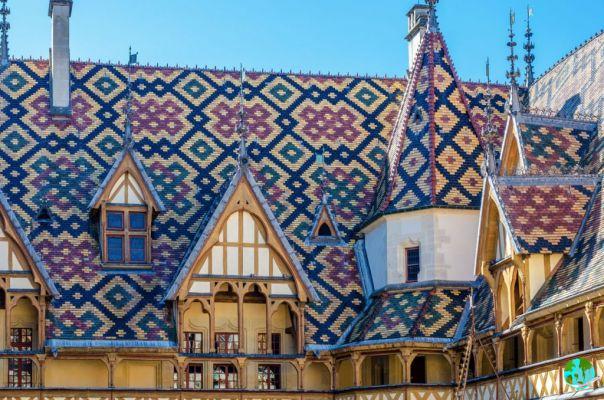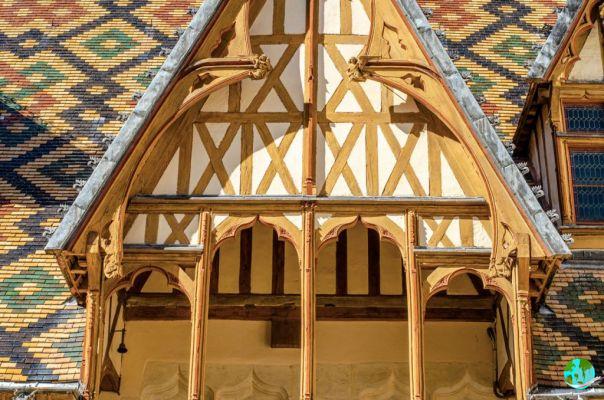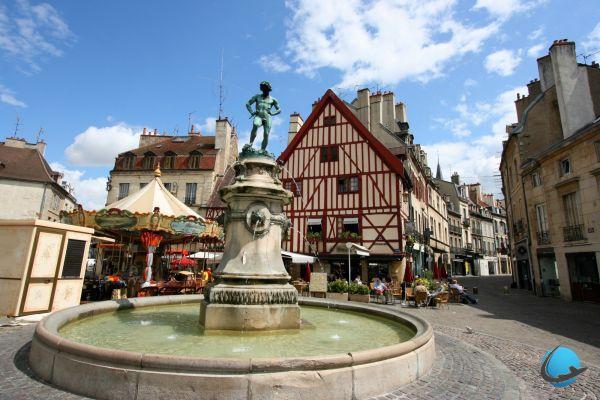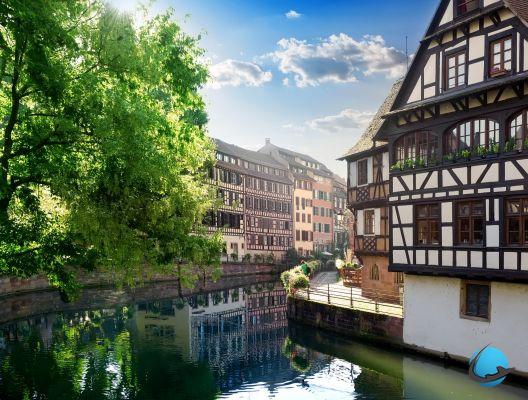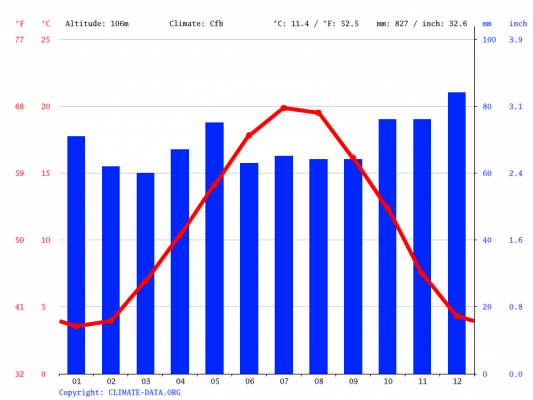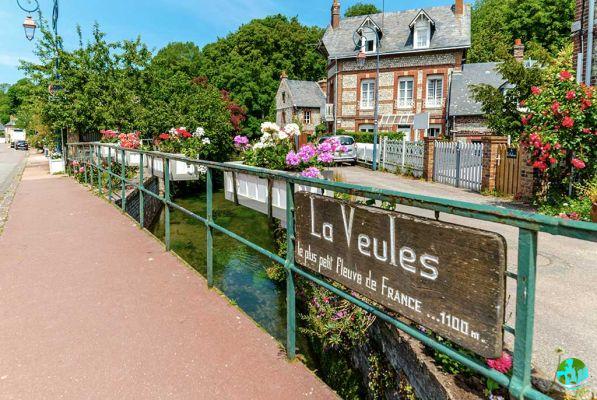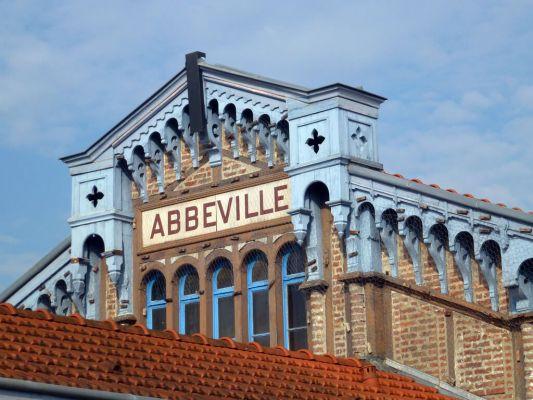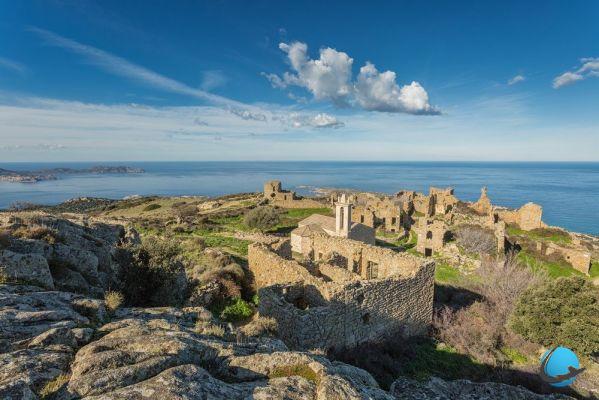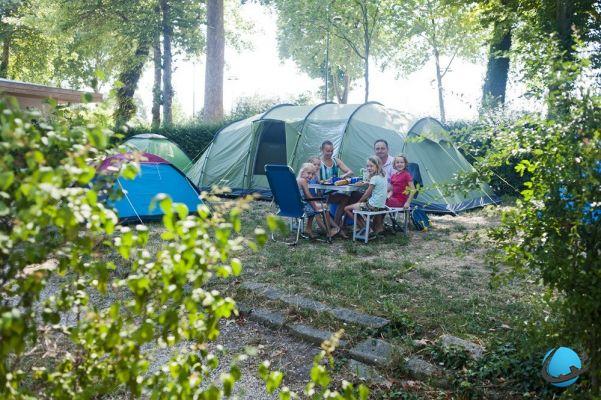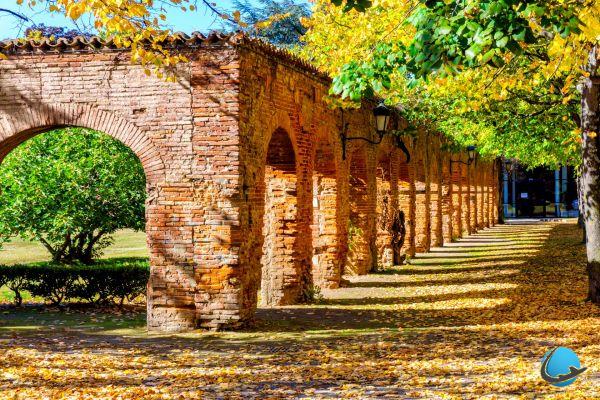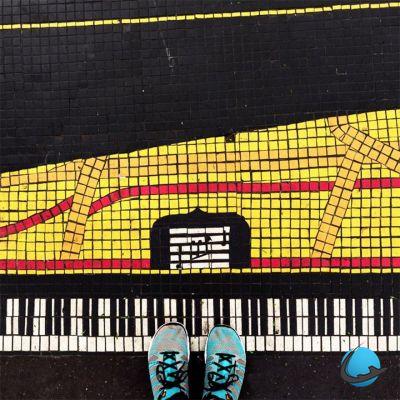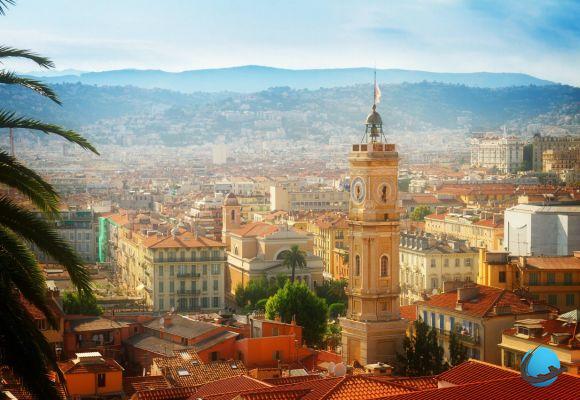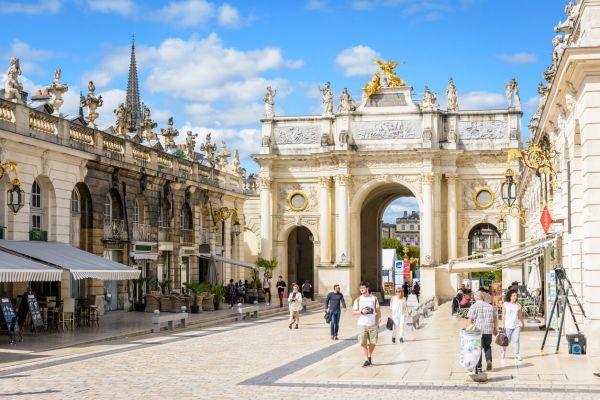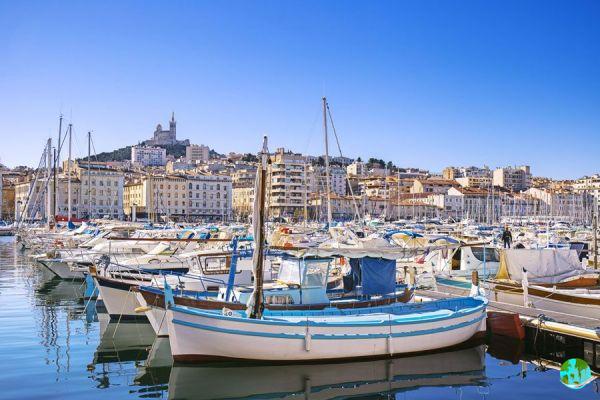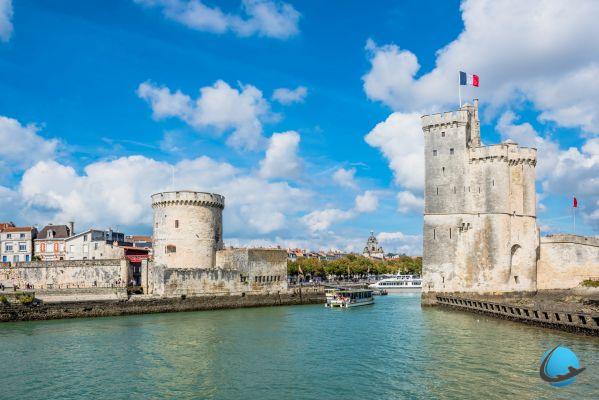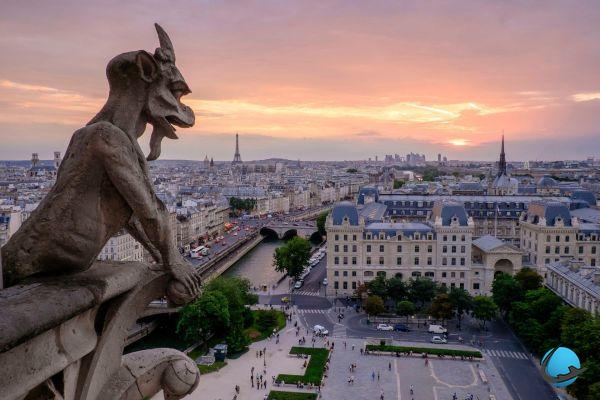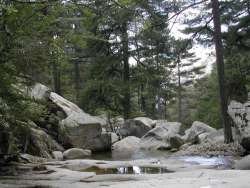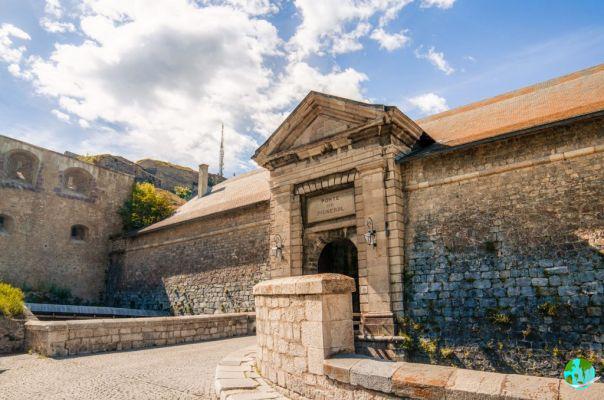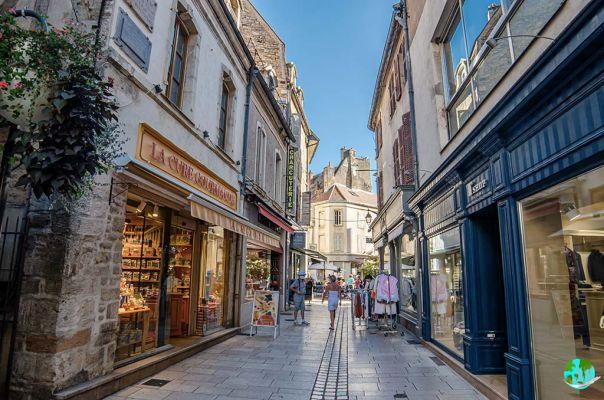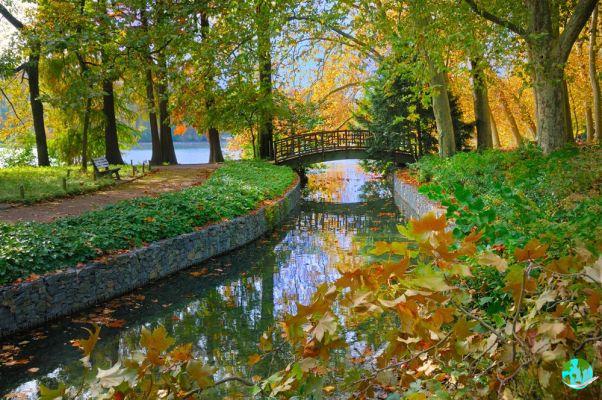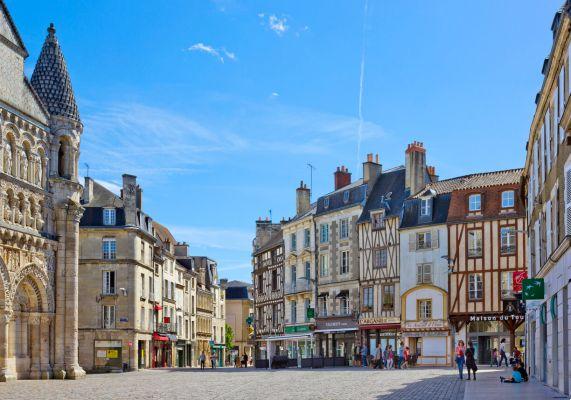It was during a stay in Burgundy that we visited the Hospices de Beaune, this emblematic building, a must for a visit to Beaune and the surrounding area. We will see in this article that the Hospices de Beaune have a very rich past and history, that its role throughout history and until today has been very important, and still is.
The Hospices de Beaune, or Hôtel Dieu, have a completely original architecture. The courtyard is flamboyantly beautiful. The interior presents very beautiful historical pieces. As you will have understood, the richness of this place is undeniable.
In this article, I give you valuable advice for organizing your visit to the Hospices de Beaune and I will also tell you how our visit to the Hôtel Dieu went.
Summary:
- Presentation of the Hospices de Beaune
- Practical advice for visiting the Hospices de Beaune
- Our visit to the Hospices de Beaune
- My opinion on this visit
Book your discovery day. On the program, visit the Hospices de Beaune, visit Beaune but also wine tasting and walks in the middle of the Burgundy vineyards: Book your visit
Presentation of the Hospices de Beaune
Let's start this article with a short presentation of the Hospices de Beaune. We will see in a next part, a more detailed presentation of the interior and the history of this place.
First of all, the Hospices de Beaune were built in the year 1443 by two emblematic people of the region: Nicolas Rolin and Guigone de Salins, his wife.
Nicolas Rolin was the Chancellor of the Duke of Burgundy at the time. He and his wife founded the Hospices de Beaune. This place welcomed the poorest and the sick. This charity, according to the beliefs of the time, would allow both spouses to later reach paradise.
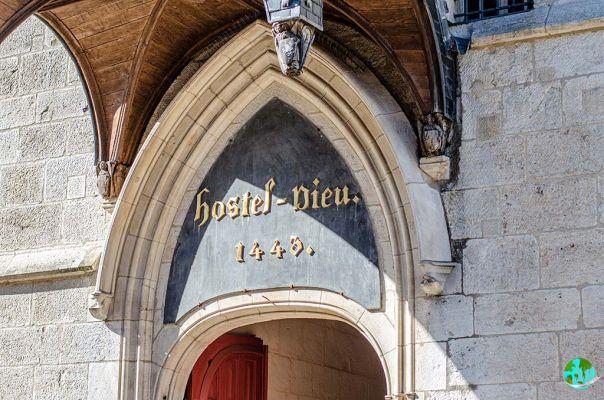
Whatever the reasons, this place made it possible to treat people with the least means. The latter were spotted at the time of the distribution of white bread to the poor which took place in front of the Hospices de Beaune. At that time, it was easy to spot the suffering people and thus be able to welcome them to this hospital.
Today, this place, the Hôtel-Dieu, is mainly a museum but also hosts events and seminars. But the Hospices de Beaune are also made up of a hospital, more modern than the Hôtel-Dieu, and a vast wine estate, built up over the centuries thanks to legacies or donations. The production is sold each year at the famous Hospices de Beaune Auctions. All of the funds collected are used to finance the hospital, but a portion is also donated to charities.
Practical advice for visiting the Hospices de Beaune
Before moving on to the details of the visit to the Hospices de Beaune, let's take a practical look at the various questions you are likely to ask yourself before going to Beaune to visit the Hôtel-Dieu.
- When to visit the Hospices de Beaune
- How much is the entry ?
- Take a guided tour of the Hospices de Beaune
- How to book your entry for the Hospices de Beaune?
- How long does the visit to the Hospices de Beaune take?
- Where to park to visit the Hospices de Beaune?
- Where to stay to visit the Hospices de Beaune?
- Where are the Hospices de Beaune?
- Where to eat around the Hospices de Beaune?
When to visit the Hospices de Beaune
The Hospices de Beaune are open every day of the year. Hours vary by season:
- From early January to mid-March: 9 a.m. to 00:12 p.m. and 30 p.m. to 14:00 p.m.
- Mid-March to mid-November: 9:00 a.m. to 19:30 p.m.
- From mid-November to the end of December: from 9 a.m. to 00:12 p.m. and from 30 p.m. to 14:00 p.m.
Please note that the ticket office closes 1 hour before the museum closes. On Christmas Day and New Year's Day, the museum opens at 10 a.m. (instead of 9 a.m.).
How much is the entry ?
Entrance to the Hospices de Beaune is €9,00 per person.
There are reduced rates for students and job seekers: €6,50; but also for young people aged 10 to 18: €4,00. Admission is free for children under 10 years old.
Take a guided tour of the Hospices de Beaune
You have the option of opting for a guided tour to learn more about the history of this place. If you opt for a guided tour, the entrance will cost you 12,00€. It is free for children under 12.
It is essential to book your guided tour in advance, directly on the official website of the Hospices de Beaune. The group is limited to 15 people.
If you cannot or do not wish to take the guided tour, you always have the option of taking an audio guide at the entrance. Available in 10 different languages, it can be an interesting alternative.
How to book your entry for the Hospices de Beaune?
As mentioned above, it is strongly recommended to book your visit in advance on the Hospices de Beaune website, especially for the guided tour where groups are limited in number of people.
In low season, you can take your tickets for a free visit directly at the entrance, provided that the maximum number of people inside is not reached.
How long does the visit to the Hospices de Beaune take?
Whether you take a guided tour or a self-guided tour with an audio guide, it will take approximately 1 time of visit. Of course, you can take your time once inside to take some pictures or simply to admire the place.
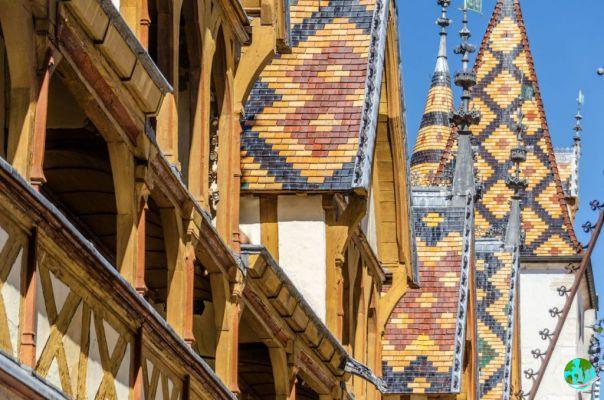
Where to park to visit the Hospices de Beaune?
The historic city center of Beaune is concentrated and can therefore be reached on foot. Various public car parks are located around this historic center. Some will be chargeable and others will be free. I invite you to go to the official website of the city of Beaune in order to have the complete list of car parks where you can park to visit the Hospices de Beaune.
Where to stay to visit the Hospices de Beaune?
Beaune is a very pleasant little town where the places to visit are varied. Spending a night in Beaune can be a great idea! In addition, the center is very pleasant and lends itself perfectly well to a short walk in the early evening. To find out more about the perfect places to sleep in Beaune and some of the most beautiful addresses, I invite you to read our articles Visit Beaune and Where to sleep in Beaune.
Find all the accommodation available in Beaune on these two online booking sites:
Find accommodation on Booking.comWhere are the Hospices de Beaune?
The Hospices de Beaune are located in Beaune, a small town in the heart of the Burgundy vineyards, about a 30-minute drive south of Dijon and 1 hour 40 minutes north of Lyon. The Hospices are located in the very heart of the historic center of the city, more precisely to the south-west of this hyper-center. They are therefore very easily accessible on foot if you park or if you are staying in Beaune.
Where to eat around the Hospices de Beaune?
There is no shortage of places to eat in Beaune! The Hospices being in the heart of the city, you will have something to delight your taste buds. Among the most prestigious addresses, there is a restaurant awarded one star by the famous Michelin guide: the Jardin des Remparts.
With a more accessible budget, you can also try famous addresses such as Loiseau des Vignes, La Superb or the Ma Cuisine restaurant. Between flavors, fresh and seasonal products, excellent local wines or even delicious local specialties, these addresses will make you discover all the richness of this Burgundy region, from the glass to the plate.
Our visit to the Hospices de Beaune
Now that we have seen the essential points so that you can organize your visit to the Hospices de Beaune, you may want to know a little more about this place and its visit! During our visit to Beaune, we opted for a guided tour of the Hospices de Beaune. This place is steeped in history and symbols, a guided tour, or at least an audio guide, is essential to better understand the issues and roles of these hospices. The story of the founding couple, Nicolas Rolin and Guigone de Salins, is a centerpiece of this place.
In this part, I will not transcribe our entire guided tour, but just give you an overview of the main rooms visited and a short summary of the history of the place. The objective here is not to reveal the whole visit to you: you have to keep a little suspense for your "real" visit.
Who are the founders of the Hospices de Beaune?
As I quickly mentioned to you, Nicolas Rolin and Guigone de Salins are at the origin of this place. They married in December 1423. Guigone was the third wife of Nicolas, who was the widower of the previous two. With more than 27 years apart, they remained married for nearly 40 years, until the death of Nicolas Rolin in 1462.
For his part, Nicolas Rolin is a very good lawyer. By winning many pleadings, he earned a lot of money. It was in 1422 that he was appointed Chancellor of the Duke of Burgundy Philippe le Bon.
As for Guigone de Salins, she comes from a noble family in the Jura. His father was the wealthy owner of saltworks in Salins-les-Bains in the Jura. Nicolas Rolin, by investing in these saltworks, increased his wealth.
Beginnings of the Hospices de Beaune
The Hospices de Beaune were founded following the Hundred Years War, which left many families in poverty and starvation. It was at this time that the spouses decided to create a place to collect and care for the “poor people”. Guigone incorporated many pieces of art to decorate this place. The sick were cared for in conditions worthy of nobility.
Visit of the main courtyard
Your visit will necessarily start with the main courtyard, probably one of the most famous photos of this place. This courtyard is a nice mix between the Burgundian style typical of the region, and a Flemish style, which Nicolas Rolin brought back from his travels in Flanders.
You will be able to see the richness of this place thanks to the various weather vanes on the buildings: they are a sign of nobility.
Regarding the buildings surrounding this courtyard, one building seems more austere than the others: it is the one overlooking the street. Indeed, this building is built of stone and covered with a huge slate roof, all topped by a magnificent arrow indicating the entrance to the Salle des Pôvres.
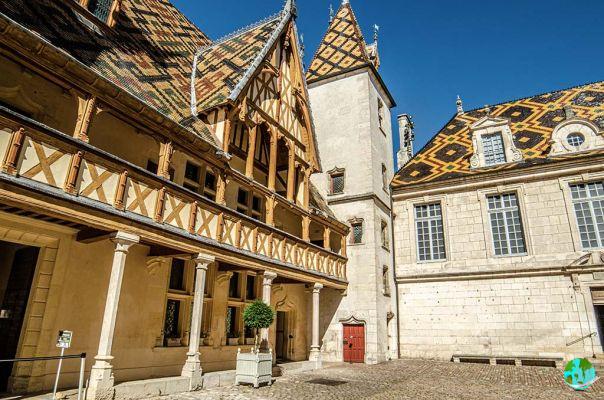
The Hall of the Poor
Probably one of the most beautiful pieces of your visit. This huge room was used for many years to receive and care for the sick. The period furniture has remained. The atmosphere of this room, composed of these many beds with red curtains, gives an impression of a return to the beginnings of this place. The dishes at the foot of the beds are still there.
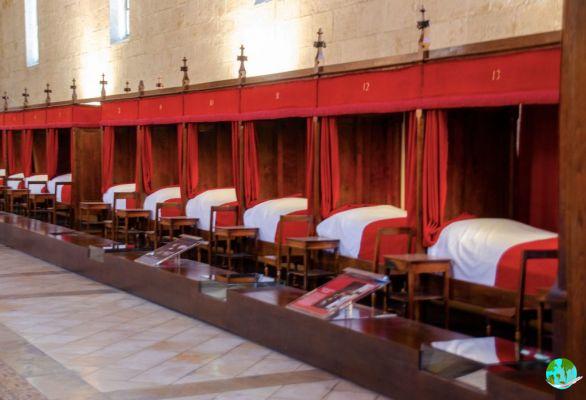
You will be able to observe decorations dating from the Middle Ages, very well restored, but also an impressive and above all, very ingenious ceiling.
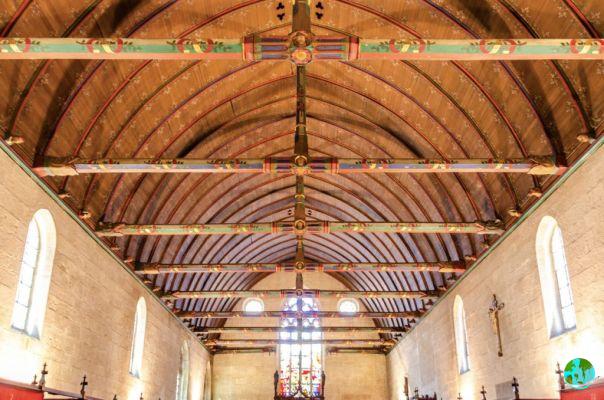
This hotel served until the construction of the new hospital in Beaune, in 1952.
A geriatrics department remained in the Hôtel-Dieu again until 1984.
In the extension of the Salle des Pôvres, is the Chapel. The latter was placed here so that the sick could attend services from their beds. You will also find a plaque indicating the place where Guigone de Salins was buried.
La Cuisine
Here is an important room: the kitchen! The latter was used until 1984, for the last patients treated here as well as for the staff.
Today, the kitchen has been reconstructed with period furniture. The room revolves around an imposing fireplace and its various kitchen accessories.
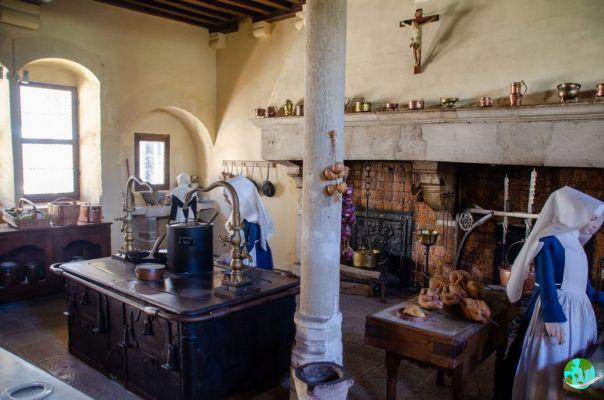
The pharmacy
Here is a very interesting piece. We can very imagine begin unfolding the preparation of the various natural remedies. Alembic, mortar, … were once used by the apothecary sisters. Continuing on from this room, you will find the Officine, where many preparations are displayed, stored in magnificent earthenware pots. Other glass jars present some more or less strange period remedies.
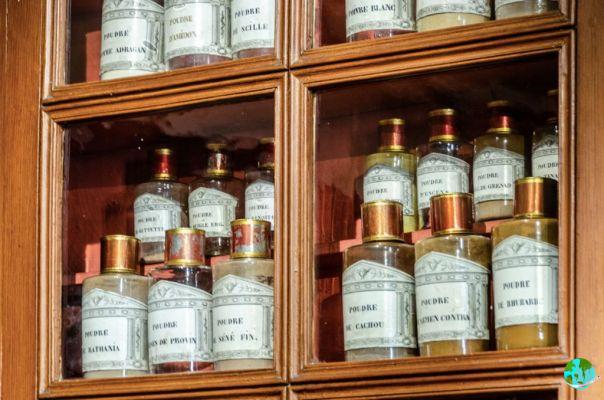
The Polyptych Room
To conclude your visit, you will discover one of the most important works of art of the Hôtel-Dieu. Commissioned by Nicolas Rolin, this polyptych dates from the XNUMXth century and was created by the Brussels artist Rogier van der Weyden.
When it is closed, you can observe a magnificent painting representing the spouses praying. When opened, the painting depicts Christ judging those who will go to hell and those who will go to heaven. The richness of this painting is incredible. The details, the symbols, the technique of the painter, … Everything is a success in this work.
At the time, this polyptych was in the chapel. It was closed most of the time and exceptionally open on Sundays and public holidays for the sick.
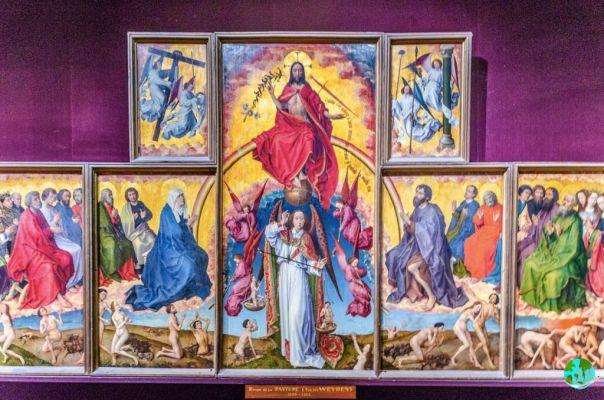
The wine estate
Throughout the history of the Hospices de Beaune, many plots of vines have been donated or bequeathed to the Hôtel-Dieu. In total, no less than 60 hectares make up the Hospices de Beaune estate. A few bottles are on sale at the shop, but it is during a major event that the majority of the production is sold: at the Hospices de Beaune auction. All the money collected during this big auction is donated to the Hospices de Beaune to finance the museum and the hospital, but a part is also donated to charities.
This event takes place every year on the third weekend of November. On this occasion, many personalities come to Beaune.
My opinion on this visit
Despite the fact that this is not my first visit to the Hospices de Beaune, it is always a pleasure. The guided tour really brings more to the history of the place, but especially to the link between the founding spouses and the Hospices de Beaune. The place is perfectly well preserved and well maintained, the works of art and the decoration as well. It is therefore a very pleasant visit to make at the Hospices de Beaune. Icon of Burgundy, it is an essential place to visit during your stay in the region.




